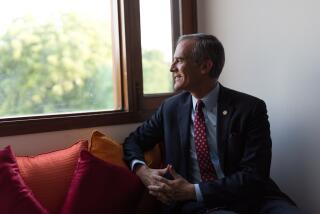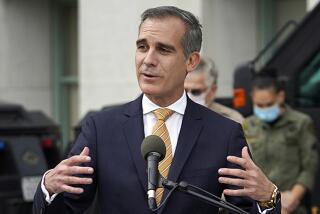India’s ugly icon of the road
New Delhi — TO describe the most famous car strutting along India’s roads today, think of some of the qualities associated with hot automotive design.
Sleek. Sporty. Sexy. Fast.
Now throw them out.
None of those words applies to the Ambassador -- in fact, quite the opposite, many say. Its boxy shape, like a derby hat on wheels, is an aerodynamic nightmare. It can have trouble overtaking wandering cows, let alone more powerful rivals. It’s not the car you’d pick to impress someone on a first date, or a fifth.
Yet everything the Ambassador is not doesn’t change what it is: an icon of modern India, a national treasure that epitomizes the country’s last 50 years, which is how long the car has been rolling off the same assembly line in eastern India, day in and day out.
Love it or hate it, this pug-nosed, bug-eyed, stodgy classic is a fixture on India’s potholed streets, a dinosaur that so far has managed to defy both evolution and extinction.
A bone-white “Amby” with tantalizingly tinted windows and a flashing red light on the roof is still the preferred car of many top officials and get-out-of-my-way VIPs. In fact, so many ministers have been chauffeured around in the car’s roomy interior that some say India has been governed, at times, from the back of an Ambassador.
“A white, darkened Ambassador immediately spells authority and is sure to get more gates open than even a Mercedes,” said Hormazd Sorabjee, editor of Autocar India.
TRACE the car’s journey through the last half-century and you can chart the rise of India’s post-colonial ruling class, its flirtation with socialism and its recent economic boom that has the world abuzz.
That boom, however, now poses the biggest threat to the Ambassador’s survival.
Economic reforms of the 1990s flung open the doors to greater competition, and India’s growing middle class enjoys more choice today than ever. The likes of Ford and Honda have muscled in on turf that once belonged indisputably to the squat and sturdy Amby, whose market share is now a ghost of what it once was.
“Cars always [meant] Ambassadors for whole generations in India. But there are many choices now that make it look obsolete,” said Murad Ali Baig, an automotive columnist. “Frankly, I think it has a finite lease on life.”
Others aren’t so sure, beginning, naturally, with the company that manufactures it, Hindustan Motors, which is planning celebrations this year to mark the golden jubilee of its signature car.
“In spite of all the global brands being available in India today, there’s still a market for this car,” said Soni Shrivastav, spokeswoman for the C.K. Birla Group, which owns Hindustan Motors. “People with attitude and people with taste and people who respect their own Indian product are still swearing by it.”
But not in the droves that did before.
In the car’s glory days, the government’s protectionist quotas and tariffs meant there was almost no competition. The joke was that you could buy any car you wanted in India -- as long as it was an Ambassador.
During the ‘70s, the Ambassador was more than its name implies; it was the undisputed king, owning 70% of the car market. (The other 30% belonged to the locally produced Premier Padmini, based on a Fiat model from Italy.)
The Ambassador plant in Uttarpara, near Kolkata, formerly Calcutta, produced 30,000 units a year. Demand so outstripped supply that buyers languished on waiting lists for months, even years. Those with connections, or a little extra cash for purposes of encouragement, got theirs first.
Now, output is half that number, and the Ambassador’s market share has plummeted to single digits. Its main buyers are the government and cab companies, which together account for 85% of sales.
What fuels many new purchases is a sense of tradition and nostalgia for a car that has witnessed more Indian history than most living Indians have.
To ride in an Ambassador is to take a trip in a time capsule. The back seat is more like a sofa, in the style of vintage cars, and the air smells of leather. It’s a high-riding car, so passengers feel elevated, but going around curves can knock you around.
The first Ambassador came off the assembly line just 10 years after India broke free from the clutches of the British Raj in 1947. Based on the design of the old British Morris Oxford, the car was hailed as proof that Indian industry could perform on its own, without help or interference from colonial overlords.
It quickly became the car of choice of politicians, captains of industry and assorted bigwigs. Prime Minister Indira Gandhi rode around in one. But as time wore on, the Ambassador morphed from the jewel in India’s industrial crown into the poster child for everything that was wrong with the overregulated economy.
In the ‘90s, as economic reforms began taking root, renowned photographer Raghubir Singh beetled around the country in an Ambassador and compiled a book of images using the car as the common thread.
“As I journeyed all over India,” wrote Singh, who died in 1999, “I came to understand that if one thing can be singled out to stand for the past 50 years of India and its closed economy, now open and moving into the new millennium, it has to be the Ambassador.”
WITH little to challenge it, the car rolled off the factory floor for decades looking and performing almost exactly the way it did in 1957. But by the early ‘90s a new Indian-made compact built under a joint venture with Japan’s Suzuki Motor Corp. had put a big dent in the Ambassador’s dominance. Only then did Hindustan Motors improve the engine to a more powerful one made by Isuzu.
The car still resembles a hat, but one that now comes in snazzier colors (“grotto blue,” “sherry red,” “symphony gold”). It now has features such as air conditioning, power steering, a compact-disc changer and sunroof. The Avigo and the Grand -- two upgraded models, or “new avatars,” as the company calls them -- cater to the luxury crowd.
But the basics are the same, and skeptics who find the car a clunky relic of a bygone era remain unconvinced.
“It’s actually only putting a dowager in a ballet skirt,” Baig said.
What the Ambassador coasts along on today is the aura of power and prestige that still clings to it, immortalized in Bollywood movies and other media. “It’s the only car that could get a seat in the Lok Sabha” -- India’s lower house of Parliament, editor Sorabjee jokes.
In fact, in December 2001, Kashmiri militants mounted a brazen assault on Parliament, killing 10 people and pushing India and Pakistan to the brink of war. The attackers slipped past security, through the Parliament complex’s VIP gate, in a white Ambassador.
One of the few cars in India heavy enough for armoring, the Ambassador was also credited with saving the life of the chief minister of Andhra Pradesh state in a 2003 bombing assassination attempt.
Its historical associations with the upper crust appealed to Jaideep Dasgupta, who recently shelled out about $14,000 for an Ambassador Grand.
“If you keep it in good condition, if you keep a smart driver and you dress formally, people will try to peep inside the window to see who’s inside the car,” said Dasgupta, a Delhi resident who was not born when the Ambassador made its debut. “It’s a status symbol.”
About 600,000 of the cars still ply the roads. Fans invariably cite its spacious interior, so capacious that police in north India once stopped an Ambassador with 27 people on board, according to Baig.
Owners also say that Ambassadors, with their heavy rear axles, weather India’s rutted roads better than other cars. And when an Amby does break down, even a village mechanic will have the parts and know-how to fix it.
The car is so fraught with historical significance, aficionados note with pride, that Singh’s photos of the Ambassador spent months on display at the Smithsonian Institution in 2003.
Critics say that’s where the car belongs.
“Dynamically, it’s one of the most unstable cars you can drive today,” said Bijoy Kumar Y, the editor of Business Standard Motoring. “The suspension is the same that it’s been for ages; they haven’t touched it. Going in a straight line, the Ambassador is fine. But when you have to brake, when you have to go around a corner, when you carry people who are very dear to you, I wouldn’t go with it.”
Kumar and others also fault the Ambassador for lacking contemporary safety features such as crumple zones, anti-lock brakes and air bags. India does not have stringent safety standards for cars, but industry observers say such standards may be adopted in the next few years.
“It’s nice to be romantic about the car,” Kumar said. “I was born in the hospital and brought home in an Ambassador.... But as a motoring journalist, I’m feeling guilty that this car is being produced.”
WHAT could finally stop production are hard-nosed business realities. Earlier this year, the Uttarpara plant ground to a halt during a two-month strike. Company executives acknowledged that “cash-flow problems” caused delays in paying workers.
Tata Motors, India’s top truck maker, has plans to introduce a $2,500 car next year; Nissan Motor Co. and Renault SA said last week that they, too, intend to explore the possibility of offering a low-priced car in the Indian market. By contrast, a basic Ambassador, the Classic, costs $8,750 -- a fortune in a country where annual per capita income hovers at about $600.
Government agencies, which account for 20% of the Ambassador’s sales, have more latitude now to buy other cars. Prime Minister Manmohan Singh travels in -- gasp! -- a BMW.
Hindustan Motors’ new strategy is to re-brand the Ambassador as suitable for the upbeat New India, for customers discriminating, trendy and rich enough to buy the car for its retro value.
That means that the fate of one of modern India’s most defining symbols may now rest in the hands of such niche buyers as fashion designer Manish Arora, 34. He has driven a black Ambassador for seven years, and insists that it will be replaced only by another (with sunroof).
“It’s very Pop Art. It’s got a cult image. It has its own fan following,” Arora said. “I don’t care for the new cars. They all look the same to me, really.
“This car stands on its own.”







